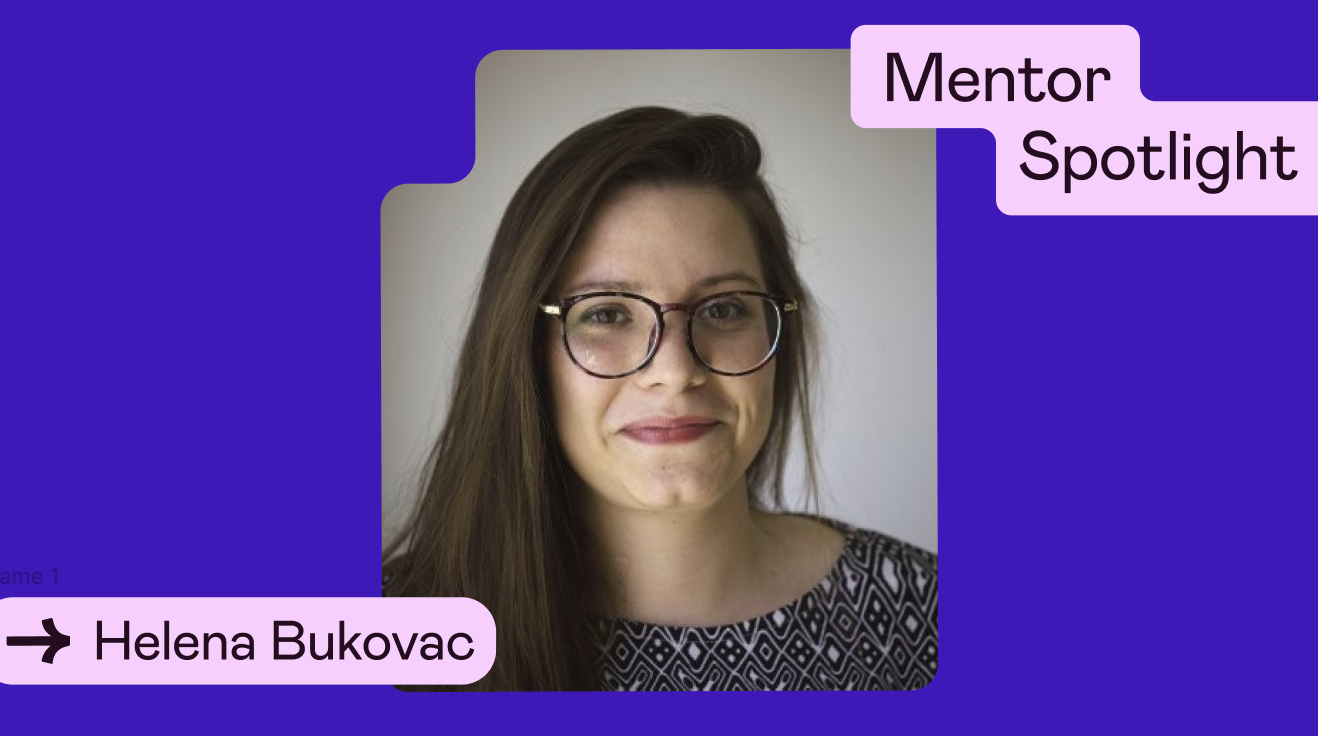Based in Calgary, Alberta, Canada, George Visan has mentored over 30 Designlab students—many of whom are now working at their dream jobs. We spoke with George about his role at Neo Financial, what makes a good mentor, and what he thinks the future holds for design in 2020 and beyond.
Hey, George! So what does an ordinary day look like for you?
Wake up at 7, take a student call if I have one, otherwise spend time with my dog and roll to the office at 8:30. From there I get cracking on a design ticket through Clubhouse, and hammer away all day. I’ll get home around 6 to walk my dog, then take a few student calls and finish off the evening with a workout, 15 minute ice bath and some meditation.
An ice bath? That sounds intense. ❄️ What is your role as a Product Designer at Neo Financial like?
My role at Neo involves ideating, wireframing, and delivering high fidelity designs for our app. I get scope from our Product Managers, start with wireframes and then go through PRs until the team is happy with the UX. From there we use our library of components to design the final hifi and ship it to dev. I’m also responsible for doing PRs for other designers and interviewing candidates.
Sounds like a cool company. Where are you located?
I live in Calgary, Alberta, Canada. And last week it was -38ºC so I don’t know exactly why I live here… Jokes aside, I live here because it’s close to the mountains, friends and family are here, and the cost of living is quite low, at least relative to the income potential.
Yikes! Aside from being cold, what do you like to do in your free time?
Well, I absolutely love my job, so I don’t really make this “free time” distinction. I don’t come home after a day of work and think “okay, now I have free time, what should I do?”. However, outside of work I exercise, meditate daily, and hang out with friends.
Seems like you’ve got a great work-life balance. 🧘🏼♂️What’s your favorite design or product right now?
Airpods are a gift to humanity. Obviously because they’re totally wireless, but also because of their pairing abilities with an iPhone. I would just buy them a hundred times over.
#Same. So how many students have you mentored at Designlab?
I actively mentor between 6 and 10 students at any given time. I think in total I’ve worked with 30 students now at DesignLab and several of those who have completed UX Academy are now in the field working their dream jobs!
We love to hear that! What attracted you to becoming a mentor?
1. Helping people find their dream job is inconceivably satisfying
2. “If you want to learn, teach”—being a mentor makes me a better designer.
As someone whose job it is to help people turn their passion for design into a successful career in the UX/UI industry, I can totally relate. What’s the biggest challenge for you as a mentor?
Catering my mentoring style to match the personality/needs of the student. On top of that, students grow at a different pace, so giving feedback relative to where they are can be complicated. Some students are able to fill in the gaps on their own while others need a bit more hand-holding.
We all need a little hand-holding every now and then. What do you find most exciting or rewarding in mentoring?
Seeing the growth students achieve from the start to the end of the course.
What’s surprised you most about the students you’ve worked with?
The work ethic. Almost all of my students have been extremely dedicated with the work, the mentor sessions, and the job search. It’s been inspiring to see them chase their dream job.
Work ethic is key. 🔑 What do you think makes a good mentor?
A great mentor must be able to do two things:
- Create an environment wherein the student wants to learn and engage. This means just being a good person, someone who is nice to talk to, someone you can be yourself around.
- Give precise, tough, but fair feedback. This means gauging the student’s capabilities and pushing them always a little bit past where they think than can go, and giving a reason why.
Great feedback is tough to write but easy to read. Bad feedback is easy to write but hard to read.
What do you think makes a good student?
Easy—show up, do the work, and respect everyone’s time. It is not more complicated than that.
I like the simplicity of that. What’s your most important tip for students who are just starting out in design?
Try as much as possible to create something that gets used by real people. Make web designs for friends or local businesses. Get practice recreating popular apps, screen for screen. Check material.io before you check Dribbble.
Great advice! What do you think the future holds for the design industry?
Ethics. A decade out, I think we’ll switch from physical interfaces to biological interfaces, and UX Design will skyrocket. Think of all the implications of having your phone screen in a contact lens… it will fundamentally change how humans interact with each other and themselves. Of course, there will be pitfalls, but our job as Designers will be to foresee them and innovate. That will never change.
Do you have any personal goals for 2020?
Visit 12 countries, go skydiving, and raise $25,000 for charity.
Check out George’s portfolio and Dribbble to see more of his awesome work!
Want to learn design with a mentor? Check out our 4-week Design 101 course, and our UX Academy career accelerator.



.svg)









.jpg)
.jpg)



